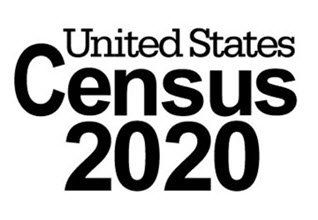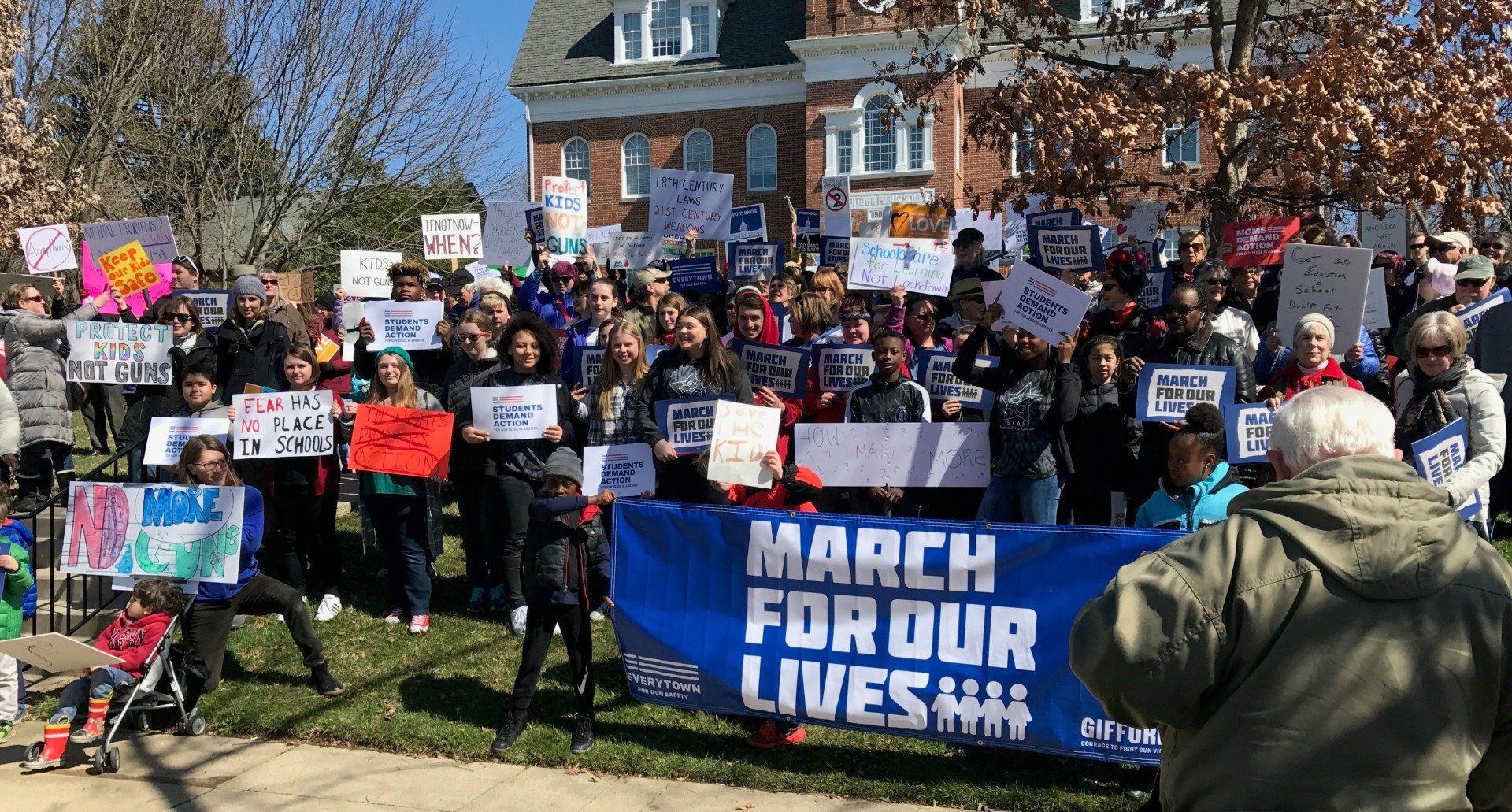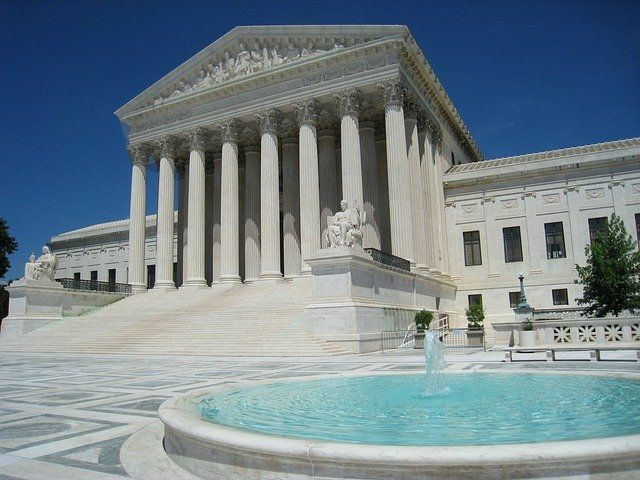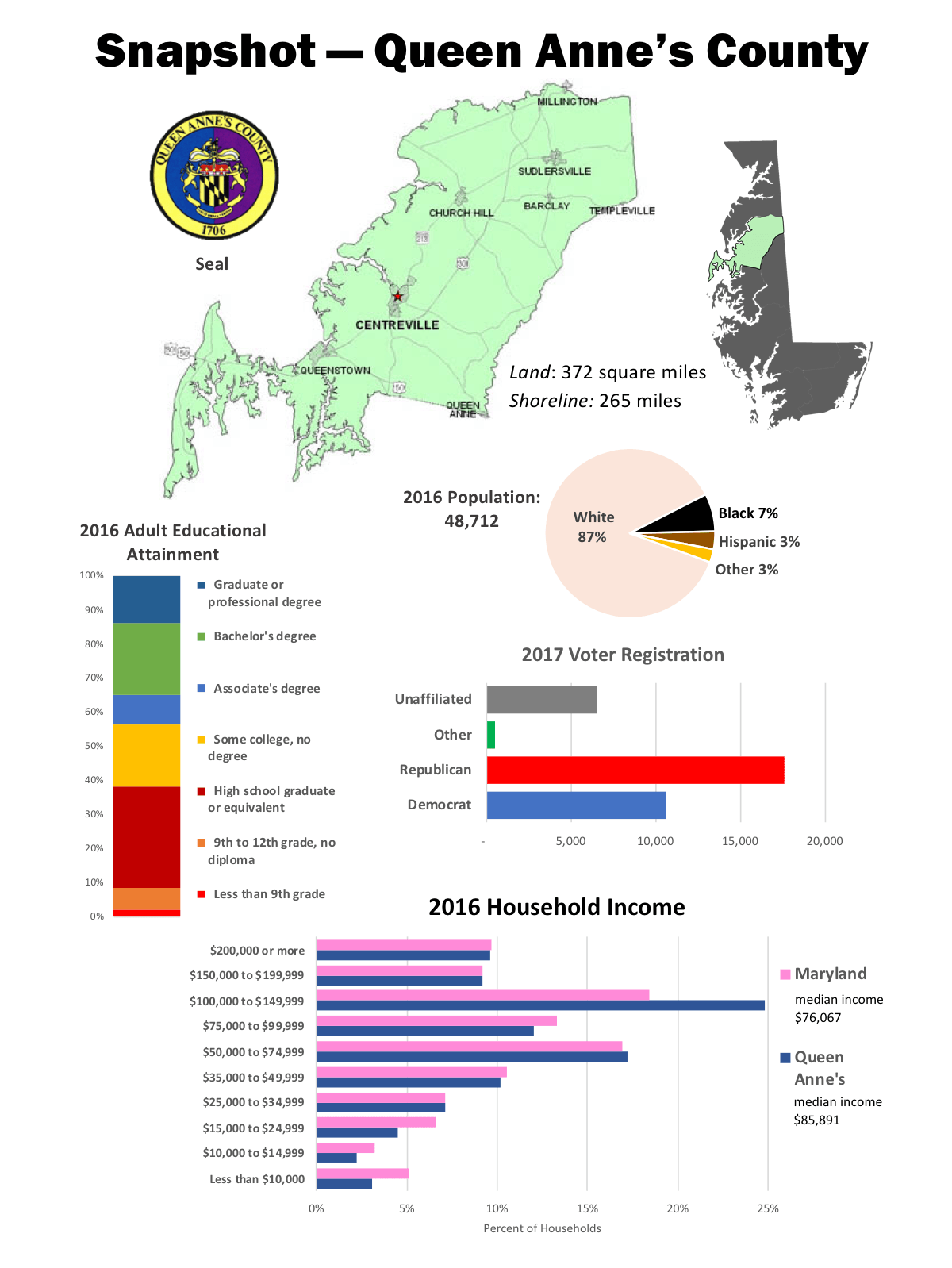

Issue #15, April 4, 2018
NOTICE: Printable versions of these articles are available under the "Newsletter Archive" menu above.
Meet the Democratic Candidates for Governor: A Forum on the Eastern Shore
Saturday, April 14, 3-5 p.m.
Salisbury University, Guerrieri Academic Commons
Sponsored by the SU College Democrats and the Wicomico County Democratic Central Committee
For more information:

Preliminary Report of the Kirwan Commission on Education
The Kirwan Commission was created by legislation in 2016 and is named for its chair, William “Brit” Kirwan, Chancellor Emeritus of the University System of Maryland. It is made up of representatives from across the State. Missing from the Commission until very recently was a representative from the Eastern Shore. That has been remedied by the recent appointment of Dr. Karen Couch, Superintendent of Kent County Schools. The purpose of the Commission is to make recommendations for improving education in Maryland. Among other things the Commission and the legislation resulting from its report will determine the formula for school funding for the next decade or more.
Education advocates, especially the teachers and representatives of local school systems were eagerly awaiting the report of the Kirwan Commission on Innovation and Excellence in Education, which was due in December 2017. Unfortunately, the commission did not meet its deadline, although it has released a preliminary report. Authorization for the Commission was slated to end officially on May 31, 2018; however, new legislation has extended the panel’s deadline until December 31 of this year.
The draft Kirwan report is based on 16 months of meetings and consultant studies, including an $845,000 study by an education consulting firm that determined that Maryland schools were underfunded by almost $3 billion. The draft Kirwan report begins with a “Call to Action,” which notes that in spite of a significant increase in state funding over the past 15 years, Maryland students “still perform in the middle of the pack within the US” and the United States itself is in the “middle of the pack against the rest of the modern world.”
The Commission in its preliminary draft established the following building blocks for a top-notch education system:
- Provide strong support for early childhood education
- Provide more resources for at-risk students
- Develop world-class, very coherent instructional systems
- Create clear pathways for students through the system, set to global standards,
with no dead ends
- Assure an abundant supply of highly qualified and racially diverse teachers
- Redesign schools to be places in which teachers will be treated as professionals, with incentives and support to continuously improve their professional practice and the performance of their students
- Create an effective system of career and technical education and training
- Create a leadership development system that develops leaders at all levels
- Institute a governance system that has the authority and legitimacy to develop coherent, powerful policies and is capable of implementing them at scale
After filing its preliminary report, the next step for the Commission was to create four or five work groups to meet during this year’s legislative session “to flesh out specific details and come up with cost estimates” that could result in changes in their recommendations. The Commission doesn’t expect to finish its work by June when the legislative session will be over but it has proposed a package of six bills to the 2018 General Assembly session:
- extending the life of the commission through 2018;
- setting up a career and technical education work group;
- improving a teacher scholarship program already on the books and getting it funded;
- increasing pre-kindergarten expansion grants;
- funding after-school and summer programs for schools with a lot of poverty;
- establishing a teacher recruitment strategy with outreach to the top quarter of high school graduates to encourage them to become teachers.
To read the Commission’s preliminary report in its entirety, go to:
http://mgaleg.maryland.gov/Pubs/CommTFWorkgrp/2018-Innovation-Excellence-in-Education-Commission-2018-01-08.pdf
For more information see the Maryland Reporter article by Len Lazarik at
http://marylandreporter.com/2018/01/08/kirwan-education-commission-wraps-up-preliminary-report/
by George Shivers
, Ph.D.

2020 Census:
Potential Problems and Repercussions
First It’s Constitutional:
The U.S. Constitution describes many responsibilities, procedures and qualifications in defining America’s unique representative democracy, its three co-equal branches of government, and the underlying theory of checks and balances among them.
However, the Constitution’s first mandate and precondition for much that follows is found in Article I, Section 2 as later changed by the XIV Amendment, Section 2: “Representatives (House of) shall be apportioned among the several States according to their respective numbers, counting the whole number of persons in each State excluding Indians not taxed. The actual Enumeration shall be made within three years of the first meeting of Congress…and within every subsequent term of ten years in such manner as they may by Law direct.” (Note: “Enumeration” = Census)
Second, It’s Extremely Important:
“Demos” as in democracy is ancient Greek for people, the foundation of America’s form of government. The 2020 Census will count the number of people in each state, county, city and incorporated town in the United States. That number and its composition (ethnicity, point of origin), will determine:
- boundaries of congressional districts,
- number of each state’s electoral votes and
- correct application of Civil Rights Laws including the Voting Rights and Fair Housing Acts in your state.
Essentially, if you are omitted or not accurately counted in the 2020 Census, you don’t exist and your state will not receive the appropriate allocation of Federal funding ($675 billion/year).
Third, What’s the Problem?
Money:
The Census Bureau of the Federal Department of Commerce is charged with designing the decennial census, preparing, testing, staffing and managing it. Normally, the Congress begins front-end loading Bureau funds three years before the census. However, in 2017 a Continuing Resolution – not a budget – was passed, keeping the Bureau’s funding at 2016 levels. In the past, the Bureau’s budget normally doubled between a year ending in 7 and 8. In 2010, the Bureau had some 500 field offices, 550,000 staff across the US at a total cost of $13 billion.
The March 2018 Omnibus Spending Bill included $2.5 billion for the 2020 Census, representing $1 billion more than the Administration requested. Because of the loss of funding for the intervening 9 months, the Bureau was unable to staff and carry out its traditional national test of integrating 40-odd IT systems, cyber-security, and the anticipated low response rates. Instead, one test was started in a single state.
Content Design:
Four years ago, the Bureau decided it needed to improve how it collected racial information. The decision reached was to combine race and ethnicity questions into one and add two new categories: (1) Middle East/North African origin and (2) Hispanic. The current administration rejected this new formulation and returned to the previous racial categories: (1) White, (2) Black, (3) Asian, (4) Native Hawaiian/Other Pacific Islander, (5) American Indian or (6) Some Other Race. Problem: it left out the estimated 57 million of Hispanic origin.
And then on March 26, 2018, the Justice Department introduced an old question, not used for the past 68 years: what is your citizenship? It is anticipated that this will cause a serious under-count among undocumented or permanent resident aliens (Green Card holders), particularly Hispanics and those from the Middle East.
Current Situation:
Eleven states, with more expected, are suing the Administration fearing that a misrepresentation of the number of people resident within their borders will cost them Federal funding, but not reduce the service requirements of their actual populations.
by Tom Timberman
Common Sense wants to get it right across the Shore. Become a volunteer CSES reporter: send us your county's news, reactions, preferences and priorities to
info@CommonSenseEasternShore.org

500 March for Gun Safety in Chestertown
More than 500 participants took part in the March for Our Lives Saturday, March 24, in Chestertown. The peaceful demonstration was one of more than 800 nationwide and around the world in response to gun violence in schools, especially the murder of 17 students in Parkland, Florida earlier this year.
Marchers assembled at the Kent County office on High Street just before noon. Carrying signs and banners, they headed down High Street to Wilmer Park, remaining on sidewalks so as not to interfere with traffic. The line of marchers was at least two blocks long. Many of them chanted, “Enough is enough,” and “Hey hey, ho ho, school shooting’s got to go,” referring to the epidemic of shootings that have plagued the country in recent years.
At the park, they heard speakers including several Kent County Middle School students, and music from a trio of local musicians. First to speak was Dr. Kathryn Seifert, CEO of Eastern Shore Psychological Services, who recommended a mental health program in every school, to allow evaluation and early treatment of the problems that lead to gun violence. The US has the second highest rate of child abuse worldwide, and is in the top five nations for its rate of sexual abuse of children, she said.
Continued in next column....

Make Baseball Great Again!
MLB Announces Historic Realignment
The Dodgers are returning to Brooklyn! That’s just part of a major shift announced by Major League Baseball, bringing a number of teams back to their historic homes. In a move to rejuvenate the fan base of the National Pastime, the commissioner’s office has decreed that all teams that have abandoned their original cities will be repatriated, beginning April 1. In a press release, the MLB noted that fan loyalty was much stronger and attendance as a percentage of area population was higher and more regular in those good ol’ days gone by. By going back, they hope to surge forward with plans to decrease sliding attendance and hit a home run at the box office.
In addition to the Brooklyn Dodgers, who relocated to Los Angeles following the 1957 season, the following teams will be returning home: the St. Louis Browns, the New York Giants, the Montreal Expos, the Washington Senators, the Seattle Pilots, the Baltimore Orioles, the Kansas City/Philadelphia Athletics, and the Milwaukee/Boston Braves.
The Athletics and Braves, who have moved multiple times, will play split seasons, with the Braves playing the first half of their season in Milwaukee and the second half in Boston. The A’s will play a half season in Kansas City and end up in Philadelphia, their original home.
There is consolation for Baltimore fans who may be unhappy about the loss of the team they have called their own since 1954 when the “Browns” left St. Louis for Baltimore and took the name “Orioles.” Replacing them will be the original American League Orioles, who relocated from Baltimore to New York in 1903 and took the name “New York Highlanders” (later changed to “Yankees” in 1913). Charm City’s devoted legions of Yankee haters will undoubtedly find some new target for their wrath, especially if, as expected, the “new” Orioles win the American League pennant this year.
A call for all the teams to resume their very first names when they relocate to their historic homes – with the Boston team renamed the “Beaneaters” and the Giants renamed the “Knickerbockers” was dismissed by the commissioner’s office as “just plain silly.”
However, the new lineup, MLB believes, will excite new fans while rekindling old loyalties and make baseball great again!
by Sidd Finch, MLB Publicity Office

Supreme Court Watch
Union Dues - Fair Share or Free Ride?
On the first Monday of October 2017, the Supreme Court began a new term. This is the fourth in a series designed to focus on decisions of the Court in this new term that might have an impact on the Eastern Shore.
Strikes and other work disruptions by public workers are now relatively rare, but for many years they were more common. Much of the labor unrest occurred because public workers had little voice in determining the terms of their employment and lacked other means to resolve disputes with management.
In an effort to address the problem, most states now permit many segments of public employees to select an exclusive union representative to deal with management. Once selected, that union has an obligation to bargain fairly and equally on behalf of all represented employees, whether members of the union or not. More than 20 states, including Maryland, also allow public employee unions to charge all represented employees, even those who choose not to belong to the union, fees for work on their behalf in order to fund the costs incurred in providing workplace-related services such as collective bargaining and the processing of grievance claims. These fees are often called agency or “fair share” fees.
Forty years ago, in a case called Abood v. Board of Education, the Supreme Court drew a distinction between fees charged non-members for a union’s purely political activities, such as lobbying, which it held were forbidden by the First Amendment, and fair share fees for more conventional workplace-related union services. Even were fair share fees to have some impact upon an objector’s free speech interests, the Court then held that payment of fees for these kinds of services was “constitutionally justified” in order to encourage “labor peace” and to prevent “free riders” who would otherwise benefit from those services for free.
In a case now pending before the Court, Janus v. American Federation of State, County, and Municipal Employees, Council 31
(AFSCME), the claim is made that the line drawn in the earlier Abood
decision is flawed and that the First Amendment bars compelled payments by non-members for any activity by public unions. Mark Janus, the plaintiff, is employed by the State of Illinois in a bargaining unit that is exclusively represented by AFSCME. The collective bargaining agreement covering his employment contains a fair-share clause to help the union defray its costs of collective bargaining and other workplace services. Janus is not a member of the union and objects to paying his fair-share fee because he disagrees with the union’s “one-sided politicking for only its point of view” and believes the union fails to “appreciate the current fiscal crises in Illinois and does not reflect his best interests or the interests of Illinois citizens.” In briefs filed on his behalf before the Court it is claimed that even the collective bargaining activities of a public employee union are intrinsically political because those activities affect levels of government spending.
AFSCME and the state of Illinois assert that the Abood
decision correctly held that fair share fees for work-related services pass First Amendment muster because they prevent free-riding, support workplace fairness, and assist in the maintenance of labor peace. They also suggest that the Court should be especially cautious discarding a 40-year-old precedent which has been relied upon by both states and unions during that time in the management of public employment relations. Under Abood, each state has the flexibility to determine what form of management-employment relations fits its own particular circumstances best. Maryland has joined with nineteen other states and the District of Columbia in a brief in support of AFSCME and Illinois.
A case raising issues similar to those in Janus
was before the Supreme Court two terms ago. It was briefed and argued shortly before Justice Scalia unexpectedly died. Following his death, the Court divided 4-4, resulting simply in the affirmation of the lower court’s decision rejecting the fair share fee challenge in that case. Now with the arrival of Justice Gorsuch, the Court again has nine Justices with the result in the Janus
case very likely dependent upon the vote of the newest Justice.
Oral argument before the Court in the Janus
case was held at the end of February and the Court’s decision is expected prior to the end of June. The result could have a broad impact on the future membership and financial viability of many public worker unions which today constitute most of the labor movement’s strength. Should Mark Janus prevail, public worker unions like AFSCME predictably would suffer severe membership and financial losses because they would lose support not only from workers who purport to object to the positions they take in negotiations but also from anyone who simply would wish to enjoy the benefits of the union’s work without having to contribute financially to the outcome. As a result, this case is one of the most closely watched of the present Court term.
by John Christie

Oops! We inadvertently released some incorrect contact information for our website and email address. We use .org instead of .com.
Please note our correct addresses:
website: www.CommonSenseEasternShore.org
Sorry if we confused anyone (we were confused ourselves....)
March for Gun Safety, continued
Four middle school students then took the microphone. Alana Fithian Wilson, Riley Glenn, Tilera Wright, and Ty-Juan Billingslea gave passionate, fact-filled statements on the impact of gun violence in schools. Violence is one of America's biggest problems, with racism as a leading cause, Wilson told the crowd. "We need people like you to get involved," she said. "It's time to take a stand, and it needs to be unified." Billingslea said guns are the third leading cause of childhood deaths, with young people exposed to gun violence more likely to engage in drug or alcohol abuse and criminal activity later in life. More American children have been killed by guns since Columbine in 1999 than American Soldiers killed in the Iraq and Afghanistan wars. This counts all deaths of children from gun shots – whether homicides, accidents, suicides, at home, in school, in malls or stores, or on the streets.
The students were followed by Grenville Whitman of Kent County Citizens to Prevent Gun Violence. He praised members of the District 36 delegation in the Maryland General Assembly for their vote to ban “bump stocks,” which allow rapid fire from semi-automatic weapons. Whitman noted that 2018 is an election year, and urged marchers to register and vote. He also noted that Rep. Andy Harris is the only member of Maryland’s congressional delegation to accept donations from the NRA. “Vote him out,” he urged the crowd, which responded by repeating “Vote him out!”
After the rally, Paul Tue, one of the organizers, wrote in a Facebook message, “I'm proud of this community and even prouder of my young people that spoke up and spoke out. That's the biggest win to me – empowering the next generation to use their voices in activism.”
by Peter Heck
Images in this issue by Francie Miller, Gren Whitman, Jan Plotczyk, Maryland Department of Legislative Services, US Census Bureau, Creative Commons
Another in Our Series of Data Snapshots of the Eastern Shore

Compiled by Jim Bogdan

